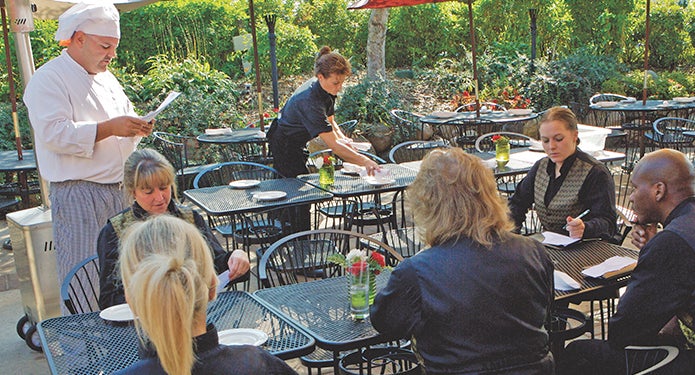As wages increase and qualified workers decrease, restaurant operators must focus on managing labour costs.
Foodservice operators today are challenged with rising costs in all areas of their business. The prices of real estate, food, labour and utilities are all on the rise. But only one of those is in your control and it’s the one that has the biggest impact on your bottom line—labour. “Controlling staffing costs is critical to managing your P & L [profit and loss] because they are one of the largest overall expenses you’ll have,” says Jason Kalinowski, Gordon Food Service Customer Solution Specialist.
Coupled with the rising costs noted above is the increasing minimum wage and a shortage of qualified staff across all areas of the foodservice industry. A shortage that is likely to continue as we move further into 2017. This smaller candidate pool and higher wage rate are driving up the price of hiring and retention, which directly impacts expenses associated with training and turnover, and putting pressure on operators to be attractive employers.
With rising workforce costs looking to take bigger and bigger bites out of your budget, keeping labour in check by monitoring your P & L as it relates to staffing can help prevent your profitability from eroding. But where to begin?
Start with a broad view of staffing costs
To accurately gauge your total price tag for employment, it’s helpful to leverage your POS (point-of-sale) system to better understand your current labour spend, as most systems track key data points. From there, you can consult third-party, industry-specific data, such as the research provided by Restaurants Canada. A resource like this can help paint a picture of where your labour costs should be based on what’s being reported.
While the standard industry assumptions say that labour should be no more than 33 percent of your total costs and no more than 64 percent of your prime costs (labour + cost of food + cost of beverages), those are just that … assumptions. There are many factors that influence your labour spend, including the size of your restaurant, the style of your restaurant and the style of service you offer, just to name a few. All of these factors, and many more, need to be considered when determining how much labour is right for your operation. “The goal,” says Kalinowski, “is to balance your staff’s workload with providing an outstanding and consistent experience for your guests.”
Looking at your actual numbers and understanding how they compare to the foodservice industry will likely reveal some imbalances, but that’s a good thing. Knowing where your labour costs stand and where they should be will reveal where adjustments need to be made. Then, it’s just a matter of pulling the right levers until you strike the right balance.
Layer in soft labour costs
While data is a great starting point, it shouldn’t be the only consideration for keying in on what’s behind your labour costs. Recruitment, turnover and training all play an expensive part. While it’s difficult to pin down an exact number, human resource experts say turnover can range from 25% of the departing person’s salary to as high as 200%, depending on their role. Plus, there’s a price tag attached to the additional time and training existing staff take on to cover gaps until that person’s role can be filled. And until that person’s role is filled, guest engagement could suffer, with less or lower quality interactions, possibly resulting in lower-than-usual sales.
These factors, known as soft costs, aren’t captured in the details of data, but should be examined alongside the hard numbers to help you understand why your labour costs may be missing the mark. Consider data the content and these operational soft costs the context.
With food service margins being so minimal, attention to all areas of your P & L can help keep profitability in check. But as labour can be one-third or more of your total expenditure, paying keen attention to your staffing costs can help keep you in the black.










